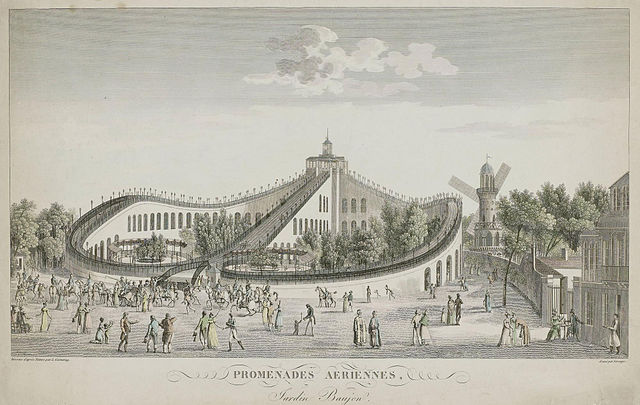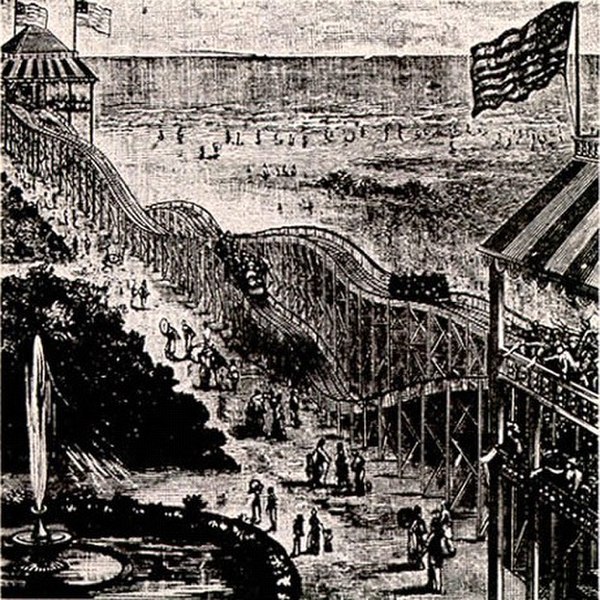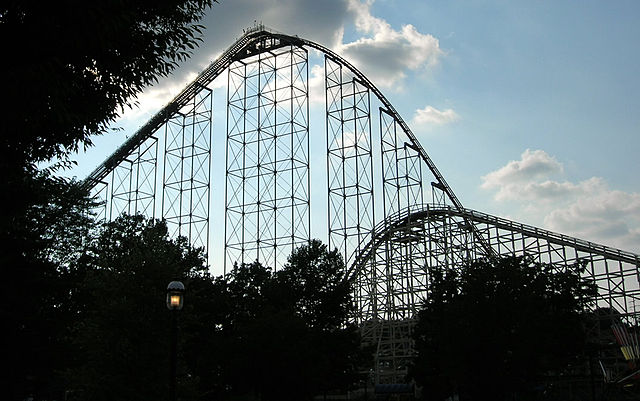A wild mouse is a type of roller coaster consisting of single or spinning cars traversing a tight-winding track with an emphasis on sharp, unbanked turns. The upper portion of the track usually features multiple 180-degree turns, known as flat turns, that produce high lateral G-forces even at modest speeds. Cars are often designed to be wider than the track to enhance the illusion of hanging over the edge. Lower portions of the track typically feature small hills and bunny hops. Wild mouse coasters first appeared in the 1950s, and following a period of decline in the 1980s, new innovations and layout designs in the late 1990s led to a resurgence in demand.
The Wild Mouse in operation at Luna Park Sydney
A roller coaster is a type of amusement ride employing a form of elevated railroad track that carries passengers on a train through tight turns, steep slopes, and other elements designed to produce a thrilling experience. Trains consist of open cars connected in a single line, and the rides are often found in theme parks around the world. Roller coasters first appeared in the 17th century, and LaMarcus Adna Thompson obtained one of the first known patents for a roller coaster design in 1885, based on the Switchback Railway which opened a year earlier at Coney Island.
The Scenic Railway at Luna Park, Melbourne, is the world's second-oldest operating roller coaster, built in 1912.
The Promenades-Aériennes in Paris, 1817
Thompson's Switchback Railway, 1884
Steel Force (left) and Thunderhawk (right), two roller coasters at Dorney Park & Wildwater Kingdom in Allentown, Pennsylvania. Steel Force is the eighth longest steel roller coaster in the world.





